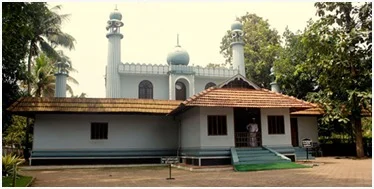The island chain and the smallest Union Territory of India, Lakshadweep found itself embroiled in controversy after Prime Minister Narendra Modi’s social media post promoting Lakshadweep was perceived as a strategic move against the Maldives. In response, three Maldivian ministers criticized Modi, leading to their suspension by the Maldives government.
With MaldivesPresident Muizzu’s pro-China stance, the incident strained relations between the two countries, prompting a call for a tourism boycott of the island nation by Indians. This gained traction on social media, with Indian celebrities supporting the movement. Travel businesses of India suspended Maldives bookings, and trade associations urged a halt in business dealings. In damage control, the Maldives government suspended the ministers and distanced itself from their comments, emphasizing the importance of positive relations with India.
Back home, the right-wing media jumped into the fray, writing how a “Hindu” Lakshadweep had turned “Muslim” over the years. Let’s have a look at the rich history of Lakshadweep to understand how it is deeply intertwined with trade, conquests, and the influence of geopolitics over the centuries.
Ancient Roots and Early Settlements
Lakshadweep’s historical roots can be traced to ancient times, dating back to the first century CE when Greek sailors mentioned the islands as a valuable source of tortoise shell. The strategic location of Lakshadweep in the Arabian Sea attracted seafaring traders such as Phoenicians, Arabs, and Romans.
The Vaylur inscription, documenting Narasimha Varman II’s conquest, provides the earliest testament to Lakshadweep’s history. Lakshadweep was annexed by a small Hindu kingdom on the Malabar Coast before CE 1100.
After the fall of the Kulashekhara dynasty in 1102, Lakshadweep came under the rule of the Kolathiris, another Hindu dynasty. In the 12th century, following the marriage of a Kolathiri princess to a Muslim convert, a separate kingdom was established in the Kannur area of Kerala, including these islands that eventually formed Lakshadweep, to uphold the Keralan tradition of matrilineal descent.
Raja Rajendra Chola (985-1014), a prominent Chola monarch, also incorporated the islands into his expanding territory.
Islamic Influence and Arab Traders
In CE 631 (41 Hijra), Arab Sufi Ubaidullah brought Islam to Lakshadweep. Legend has it that Ubaidullah, inspired by a dream in Makkah, arrived on Amini Island on Lakshadweep, where another dream urged him to propagate Islam.
King Cheraman Perumal, who founded the oldest inhabited islands, converted to Islam. The islanders too embraced Islam due to the influence of Islamic noble values and culture after seeing the honest dealings of Muslim traders.
Historical records from foreign travelers like Al Biruni, Abu Zayad, and Marco Polo extensively mention the lush green Lakshadweep islands along the Kerala coast. Thus, the influence of Arab naval traders played a pivotal role in introducing Islam to Lakshadweep, shaping the islands’ socio-cultural landscape, evident in the mosques and architecture.
Colonial Period and European Powers
Throughout its history, Lakshadweep experienced the influence of various European powers that arrived in the isolated islands, attempting to annex them for territorial expansion. Vasco da Gama from Portugal is recognized as the first foreigner to set foot on the shores of Lakshadweep in 1498.
The Portuguese, Dutch, and British established a presence in nearby coastal regions, but their direct interference in administering the islands was limited. Serving as a pivotal point in maritime trade routes, Lakshadweep became a significant hub during the colonial era.
The Portuguese can be credited to construct a fort to control trade, particularly in coir. An uprising occurred in 1545, challenging Portuguese rule. Subsequent the Bibis (Muslim female rulers) and their spouses governed Lakshadweep until the Amindivis, part of the northern group, came under Tipu Sultan’s control in the 1780s. Following Tipu Sultan’s defeat by the British in 1799, the Amindivis fell under British jurisdiction. The Bibi and her spouse were allowed to retain other islands, receiving income in exchange for an annual payment to the British. Persistent payment delays led to the Bibi ceding direct administration of these islands to the British in 1908.
British Rule and Changing Dynamics
The Portuguese invasion left a lasting impact on Lakshadweep’s history. First, the islands evolved into a notable maritime trade hub. Secondly, a dark era characterized by plunder, pillage, oppression, and tyranny unfolded. The advent of the British marked a significant shift in Lakshadweep’s trajectory.
After the Third Anglo-Mysore War (1789-1792), British control extended to the Laccadive Islands of Minicoy and Amindivi. The Lakshadweep Regulation of 1912, introduced by the British diminished the judicial authority of local chieftains, reshaping the island’s governance. The Amindivi Islands were incorporated into the South Canara District of Madras Presidency, while others became part of the erstwhile Malabar District.
Recognizing the economic potential of coconuts, the British established copra production in the islands and developed infrastructure such as ports, jetties, and wireless telegraph stations. Additionally, schools and hospitals were established to provide education and healthcare services. The relative peace and stability brought by the British contributed to the growth of trade and economy in the islands.
Preservation Efforts and Modern Union Territory Status
In 1947, following India’s independence, Lakshadweep gained Union Territory status. In 1956, the islands were briefly merged into the Madras Presidency based on language and later included in the state of Kerala.
The present status of Lakshadweep as a Union Territory under the government of India was achieved through the States Reorganization Act of 1956. Originally known as Laccadive, Minicoy, and Amindivi, the islands were renamed Lakshadweep in 1971.
The Lakshadweep Lok Sabha constituency, covering the entire Union Territory and reserved for Scheduled Tribes, saw its first election in 1967. Before that, the Member of Parliament was directly appointed by the President of India. Independent politician P.M. Sayeed won the inaugural election in 1967, succeeding the appointed MP K. Nalla Koya Thangal, who served two terms from 1957 to 1967. The current Lok Sabha MP, Mohammed Faizal PP, belongs to the Congress Party and was first elected in 2014 and again re-elected in 2019.
Lakshadweep is an archipelago of 36 islands. It is located 200 to 440 km (120 to 270 mi) off the Malabar Coast of India. Lakshadweep means “one lakh islands” in Malayalam and Sanskrit. Jeseri is the primary as well as the widely spoken native language.
It is the smallest union territory of India with total surface area approximately 32 square km. At the 2011 Indian census, the population of the Union Territory was 64,473. The majority of the indigenous population is Muslim of Malayali ethnicity and most of them belong to the Shafi School of the Sunni sect.


